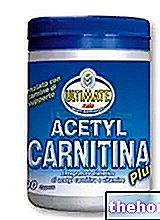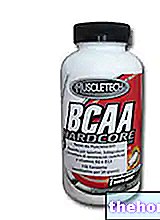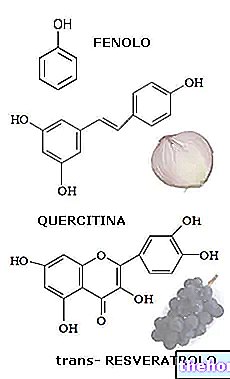
About Nitric Ram - Prolabs
Nitric Ram - Prolabs
Food supplement of branched chain amino acids with Vitamin B6 and arginine.
FORMAT
Pack of 140 tablets
INGREDIENTS: L-Arginine - L-Leucine - L-Isoleucine - L-Valine - Emulsifier: Microcrystalline Cellulose - Anti-caking agents: silica, Magnesium stearate - Vitamin B6.
For 7 tablets: L-Arginine 3000 mg - L-leucine 2500 mg - L-valine 1250 mg - L-isoleucine 1250 mg - Vitamin B6 0.6 mg
Branched chain amino acids - group consisting of three essential amino acids: leucine, isoleucine and valine. As essential, it is necessary to provide for their introduction through diet, which can be quite simple given the "abundant presence in both animal and vegetable products. A" balanced diet, which brings about 360 Kcal in proteins, is able to provide as many as 9 grams of branched-chain amino acids, and thus satisfy a large part of the organic requirements of these molecules.
Their importance from a biochemical-physiological point of view can be traced back to:
- Anabolic role: they are part of the protein synthesis processes;
- Energetic role: they are the oxidative substrate preferred by the organism and in particular by the muscle tissue, after carbohydrates and lipids;
- Gluconeogenic role: they are able to support glucose synthesis, through common precursors such as pyruvate and oxaloacetate, or by increasing the levels of alanine and accelerating the myohepatic glucose-alanine cycle;
- Plastic and structural role: they are part of the restoration of muscle myofibrils;
- "Detoxifying" role: they increase circulating glutamine levels.
Together with these general characteristics, the numerous scientific evidences supporting the hypothesis of a hormonal and anti-fatigue regulatory role must also be considered.
BCAA and Sport
Several publications have shown how the oxidation of branched chain amino acids, and in particular of leucine, can significantly increase during intense physical activity, accompanied by a drop in plasma levels and a reduction in muscular and athletic capacities.
This evidence paved the way for the experimentation of BCAAs in sports practice, allowing to highlight some important properties, such as:
- ANTI-FATIGUE
- MYPROTECTIVE

Anti-fatigue property: the first studies in this regard, showed how supplementation with BCAA a few minutes before performance could increase the time necessary for muscle exhaustion, prolong performance, and reduce the sensation of fatigue. Initially these abilities were attributed exclusively to the biochemical role of amino acids in branched chain, useful in supporting the energy functions of the organism, while today the ability of BCAAs to significantly reduce the levels of circulating aromatic amino acids, including tryptophan, responsible for the production of serotonin and relative sensation of central fatigue, is known.
In particular, the action of the branched is due to the ability of these 3 amino acids to compete with tryptophan for the LNAA transporter present at the level of the blood brain barrier, reducing the availability of free tryptophan and consequently the production of serotonin (neurotransmitter involved in the mechanisms of fatigue - tiredness - aggression) at a central level.


Present in peanuts, meats and legumes, arginine is absorbed at the duodenal level, and partly metabolized at the enterocytic level. Once absorbed, it reaches the various parts of the body, in particular the liver, where it supplies the urea cycle. thus ensuring detoxification from ammonia. In addition to its detoxifying action, arginine is important for:
- boost the immune defenses;
- synthesize creatine;
- ensure proper protein synthesis;
- allow the synthesis of collagen, polyamine and proline, facilitating reparative phenomena.
Other properties very dear to athletes of various disciplines:
- Precursor of nitric oxide: powerful vasodilator that would allow a better flow of oxygen and nutrients in the muscles;
- Inducer of GH secretion: which would guarantee an increase in lean mass at the expense of fat.
Rationale for use - Nitric Ram - Prolabs
Although the supplementation with branched chain amino acids has been tested for several years now, it is important to reiterate that there is still no consensus on the potential ergogenic effects of these products. In particular, if the protective and anti-fatigue effect seems to be the most effective. characterized, the effect on hormonal secretion and performance improvement remains to be investigated.In this regard, it seems that BCAAs are not able to significantly improve performance, neither at low nor at high dosages. The aspect of hormone secretion remains somewhat doubtful, given the presence of some studies that show an increase in GH secretion following supplementation with 12 g of BCAAs and exercise conducted at 75% of VO2max, and in the presence of others who deny categorically these results.
Regarding arginine, the scientific literature is very skeptical about the various effects described and hypothesized, in particular on the release of GH, where there is a very high individual variability. Even more uncertain is the ability to improve performance by reducing lactate levels and the sensation of muscle fatigue, probably associated with the substrate effect on the release of nitric oxide (powerful vasodilator) by endothelial cells.
Together, arginine and BCAA have been shown to be effective, when taken in the "immediate pre-workout (10" before), in sparing muscle from exercise-induced proteolysis conducted at 50% of maximum intensity, and in shifting the plasma BCAA / Tryptophan ratio. verso, the branched with a consequent reduction in the synthesis of serotonin.
Method of use recommended by the company - Nitric Ram - Prolabs
Swallow 7 tablets a day with water or other liquid of your choice, 30-40 minutes before training or competitions.
Method of use in sports practice - Nitric Ram - Prolabs
In common sporting practice, dosages around 100 mg / kg are suggested, regardless of the physiological, nutritional and sporting needs of the athlete. The choice of dosage should instead be calculated on the basis of the aforementioned variants, in particular in relation to the amount of protein ingested. On average , in healthy individuals who practice physical activity at an amateur level, dosages around 83 mg / kg / day are considered effective, which double in competitive athletes. The intake should be carried out on an empty stomach, in order to avoid competitive reactions in intestinal absorption processes. , approximately between 40 and 60 "before training, given the rapid but variable intestinal uptake times.
As for arginine, beneficial effects on performance were recorded at dosages between 2 and 8 grams / day, while other dosages were tested to modulate GH secretion, with disappointing results.
The product in question has well-balanced dosages, which are well suited to meet the needs of both BCAA and Arginine at the same time. The number of tablets to be taken should be calibrated considering a dosage of 83mg / kg / day; for a man of 70kg, the 7 tablets provided by the manufacturer therefore guarantee a correct supply of branched chain amino acids and at the same time of arginine.
Nitric Ram - Prolabs synergies
BCAA + Arginine: a study carried out on 8 healthy volunteers shows a significant reduction in phenylalanine levels (marker of muscle proteolysis) following physical exercise preceded by integration with 2 g of BCAA and 0.5 g of arginine.
BCAA + Carbohydrates: some studies show a useful synergy to reduce the feeling of fatigue during athletic performance (potential role of BCAAs), and improve performance (energy role of carbohydrates). In the post work out, however, BCAAs seem to improve insulin sensitivity, therefore the resynthesis of glycogen in the presence of CHO, while high glycemic index carbohydrates, by increasing insulin secretion, can both favor the absorption of the same BCAAs and support the anabolic phase
Nitric Ram Side Effects - Prolabs
Known are the long-term side effects of a diet too rich in protein or amino acids. Damage to the kidney, dehydration induced by increased urinary secretion, lipidemic alterations and associated pathologies, tissue acidosis and bone demineralization, are just some of the consequences of a prolonged unbalanced diet.
Acute BCAA ingestion appears to be well tolerated and free from side effects, even when concentrations rise to 450mg per pound of body mass.
Precautions for using Nitric Ram - Prolabs
The product is contraindicated in cases of renal or hepatic pathology, cardiovascular disease and / or hypertension, in pregnancy, during lactation, under 12 years and in adolescents not yet trained.
In case of prolonged use (over 6/8 weeks) the doctor's opinion is necessary.
This article, elaborated on the critical rereading of scientific articles, university texts and common practice, is for information purposes only and therefore has no medical prescription value. It is therefore always required to consult your doctor, nutritionist or pharmacist before undertaking the use of any supplement.. Learn more about Nitric Ram's critical analysis - Prolabs.
J Strength Cond Res. 2010 Apr 7. [Epub ahead of print]
BCAA Supplementation Lowers Perceived Exertion But Does Not Affect Performance in Untrained Males.
Greer BK, White JP, Arguello EM, Haymes EM.
J Strength Cond Res. 2010 Apr; 24: 1125-30.
Sharp CP, Pearson DR.
J Sports Med Phys Fitness. 2009 Dec; 49: 424-31.
Matsumoto K, Koba T, Hamada K, Sakurai M, Higuchi T, Miyata H.
J Nutr Sci Vitaminol (Tokyo). 2009 Jun; 55: 288-91.
Shimomura Y, Kobayashi H, Mawatari K, Akita K, Inaguma A, Watanabe S, Bajotto G, Sato J.
Int J Sport Nutr Exerc Metab. 2007 Dec; 17: 595-607.
Greer BK, Woodard JL, White JP, Arguello EM, Haymes EM.
Int J Sports Med. 2007 Jun; 28: 531-8. Epub 2007 May 11.
Matsumoto K, Mizuno M, Mizuno T, Dilling-Hansen B, Lahoz A, Bertelsen V, Münster H, Jordening H, Hamada K, Doi T.
Med Sci Sports Exerc. 1998 Jan; 30: 83-91.
Mittleman KD, Ricci MR, Bailey SP.
Sports Med. 1995 Sep; 20: 160-88.
Meeusen R, De Meirleir K.
Amino Acids. 2001; 20: 1-11.
De Palo EF, Gatti R, Cappellin E, Schiraldi C, De Palo CB, Spinella P.
J Sports Med Phys Fitness. 2000 Sep; 40: 240-6.
Coombes JS, McNaughton LR.
Sports Med. 1999 Jun; 27: 347-58.
Mero A.
and to allow maintenance of a high level of performance.
J Cell Biochem. 2010 May 12. [Epub ahead of print]
Higuchi N, Kato M, Miyazaki M, Tanaka M, Kohjima M, Ito T, Nakamuta M, Enjoji M, Kotoh K, Takayanagi R.
Adipose tissue branched chain amino acid (BCAA) metabolism modulates circulating BCAA levels.
Herman MA, She P, Peroni OD, Lynch CJ, Kahn BB.
J Biol Chem. 2010 Apr 9; 285: 11348-56. Epub 2010 Jan 21.
http://jn.nutrition.org/cgi/content/full/135/6/1547S
Int J Sports Med. 2007 Jun; 28: 531-8. Epub 2007 May 11.
Matsumoto K, Mizuno M, Mizuno T, Dilling-Hansen B, Lahoz A, Bertelsen V, Münster H, Jordening H, Hamada K, Doi T.




.jpg)











.jpg)











